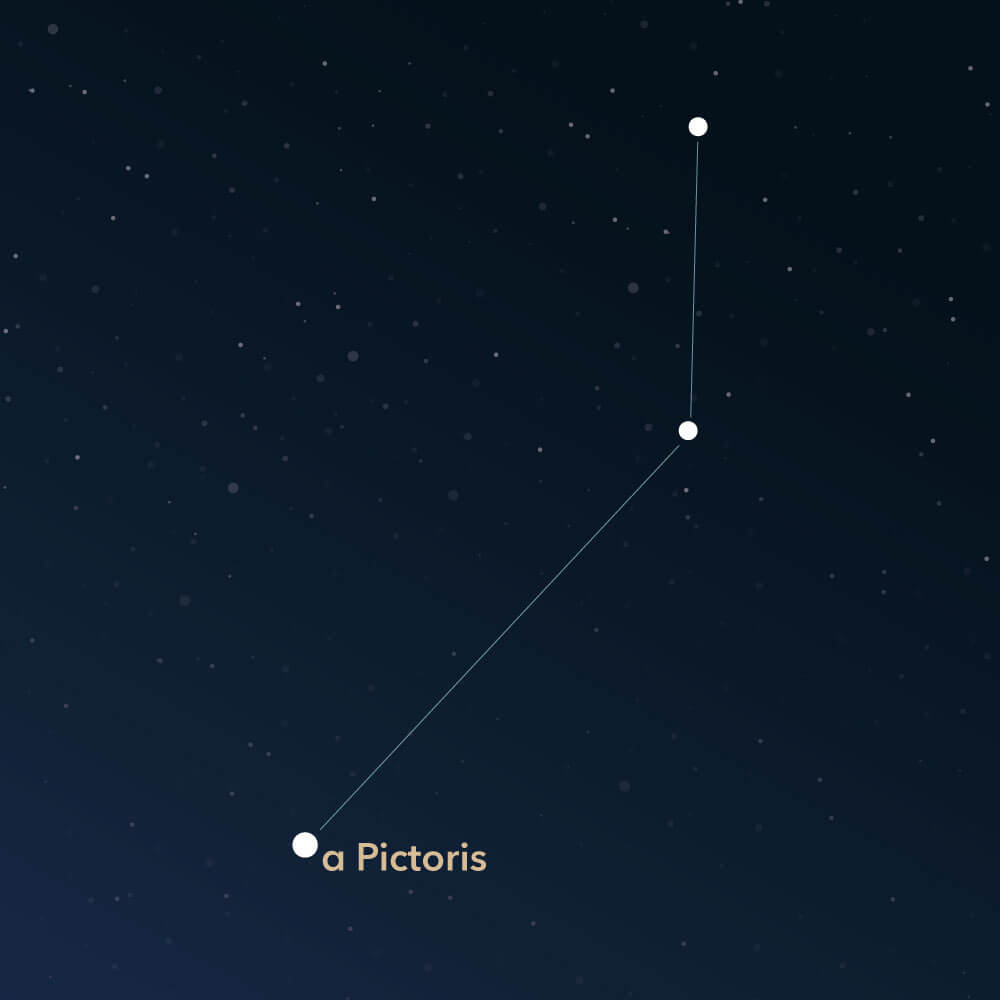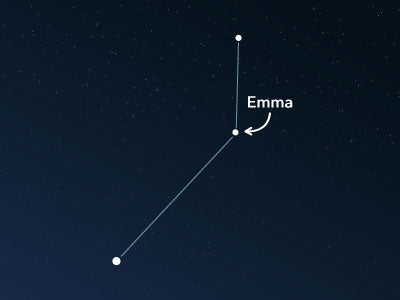The constellation Pictor
Characteristics
- Other names / Symbolism
- Painter, Easel
- Hemisphere
- Southern hemisphere
- Visibility
- November - February
- Area
- 247 deg²
- Brightest star
- α Pictoris (HIP number 32607)
- Specialties
- Galaxies

The Pictor, Latin for Painter, is an inconspicuous constellation in the southern hemisphere. Besides Painter, it is often referred to as the Easel, because it was depicted as an easel with a brush in older star charts. In its area lies a unique deep-sky object.
Hemisphere, visibility, and area
The constellation Pictor lies in the southern celestial sky and is visible from the entire southern hemisphere. North of the equator, it can only be seen up to the 26th parallel, including places such as the northern districts of Miami in the United States or the country of Bahrain.
The Pictor is circumpolar up to 35° S, making it visible throughout the year in southern regions. The best time to observe it in northern areas is from November to January.
Covering an area of approximately 247 square degrees, Pictor ranks 59th in size compared to the other 88 constellations.
In most visualizations, three stars are connected to form a line. The southernmost point is marked by the star α Pictoris (Alpha Pictoris), which has an apparent magnitude of roughly 3.3. It is a blue-white subgiant located approximately 100 light-years away.
Due to the faint stars and unremarkable shape, Pictor can be challenging to find in the night sky. However, it can be located by its six neighboring constellations. The Columba, the Caelum, and the Dorado surround the Pictor. The Volans, the Carina, and the Puppis also border it.
Specialties in the constellation
In the area of the Pictor, there is, among others, the elliptical dwarf galaxy NGC 1705. The British astronomer John Herschel discovered it in December 1834. For many astronomers, the galaxy is a special object because it is believed that the large cluster of stars at the center of the galaxy is one of the first clusters of stars formed in the early universe. It is estimated that the unusually strong star formation occurred about 26 to 31 million years ago. Due to the enormous cluster of stars, the galaxy can also be referred to as a starburst galaxy.

History
Nicolas Louis de Lacaille, a French astronomer, and mathematician determined the positions of over 10,000 stars after the invention of the telescope. He did this from near Cape Town in South Africa. He noticed that some areas of the sky had not yet been defined, so he established some new constellations.
He primarily used terms from technical innovations for their names. That is a striking difference from the constellations of antiquity, which typically carry names of mythological figures.
It is believed that his own easels were the inspiration for the term "painter's easel." He is said to have used these as stands for his sky maps. Later, the term "Pluteum Pictoris" (English: painter's easel) was abbreviated, and the word "Pictor" (English: painter) became the commonly used name for the constellation.
PublishedRead more interesting articles

An overview of all 88 constellations
Learn more about all 88 constellations and read interesting information about the mythology, visibility, and features.

Planetarium App
Discover the night sky with our planetarium app!
Available for iOS and Android.

Name a star in the constellation Pictor
Name a star in a constellation and create something that lasts for eternity.